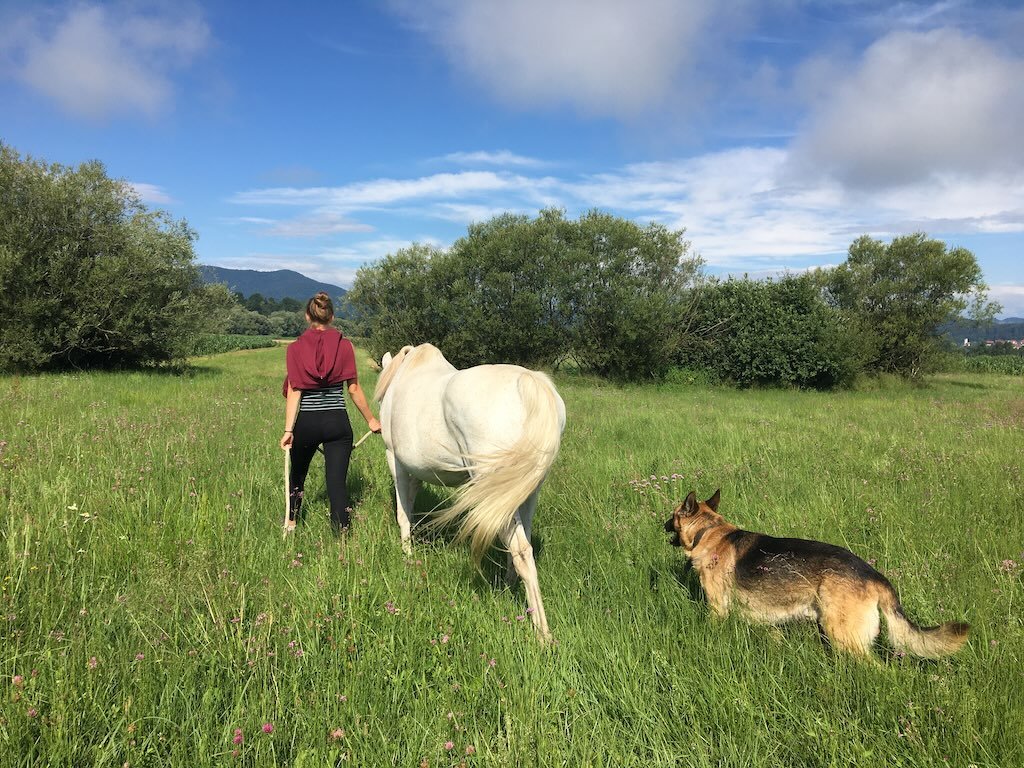Good posture on the trail
Groundwork should not be reserved for the arena only. You can do some wonderful groundwork and set up a good foundation for healthy posture on the trail too.
Establishing good communication is a prerequisite to teaching good posture on the trail.
Teaching good posture is key when keeping our horses healthy, and while doing this in an arena might make the most sense, there are other ways to do it. Some riders believe that good posture is only necessary for specific disciplines, like dressage or show jumping, but it is an important aspect of the trail horse's education too. Good posture should be part of the horse's basic training, regardless of his future career.
If you don't have an arena available, this doesn't have to mean you can't do groundwork or any other kind of basic posture training. So, how do you teach good posture on the trail? The easiest way is to start from the ground, as it gives you the more control and it makes the job easier for the horse, as he doesn't have to carry you. The first step is always good communication. Hand walking over different terrains is always a good start, as it enables the horse to become familiar with different surfaces and inclines. Practice teaching your horse to respond to your body language – he should slow down if you slow down, pick up the pace, if you do, and turn when you turn your body, all without the need for you to tug on the lead rope. When that kind of communication is well established, you can add some static exercises to engage the thoracic sling and the core muscles. Walk, stop, do a couple of repetitions, then walk on. As you do this, see if the horse can keep the muscles engaged in between stops. You will know he is engaging his thoracic sling when his neck starts to appear longer and forms a nicer arch. His head will drop a bit lower and his footsteps will become quieter. There will be a gentle lift in the wither area. Slowly you can then shape this behaviour so he is able to engage more and more while he is walking.
A gentle incline can help encourage thoracic sling and core muscle activation.
This is a great start, but it doesn't have to end there. You can do the same thing in trot, if you are up for a little jog. The obvious added benefit to this is that you get some exercise too! When working in trot on the trail, go back to the start and establish basic communication first. Teach the horse to trot when you start to jog, and stop as soon as you stop, without you having to pull on the lead rope. Play around with transitions until this becomes as automatic as the communication in walk. Then do the same thing you did before. Stop, ask for TS engagement, walk, then trot. As soon as the horse loses good posture go back to walk and repeat. Breaking it down into baby steps helps a lot and will pay off in the long run.
If your horse is having trouble at this stage, you can use a slight incline to help you out. When trotting uphill, most horses will tackle this extra challenge by slightly lowering their head and engaging the TS and the core. See if you can find a short incline, ask for a few steps of trot uphill, then ask the horse to maintain the posture for a couple of steps once the terrain evens out. Gradually increase the number of steps on the flat. Well timed praise will work wonders when doing this.

